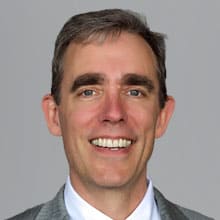Inside Angle
From 3M Health Information Systems
$500,000 to replace a physician: The cost of burnout and some solutions to the problem
“More than half of U.S. physicians are now experiencing professional burnout.”
In a new episode of the Inside Angle podcast, Christine Sinsky, MD, vice president of professional satisfaction at the American Medical Association, said it costs about $500,000 to replace a physician, based on a study she and colleagues published in December 2017.
In studies of physician and nurse burnout, there are a number of factors driving these clinicians away and interventions to help keep them. Cost containment pressures alone are good enough reason to explore these solutions, though of course the costs of burnout are much greater than the finances: Burnout has a negative impact on quality of care, patient safety, operational efficiency and of course the direct negative impact on the burned-out individuals.
Working with electronic medical records is cited as a significant driver of burnout.1 The requirements of documentation force doctor and nurse noses onto computer screens at the expense of interacting with patients and families. These healthcare professionals often spend hours in the evenings or early mornings catching up on documentation at the expense of their own families and work-life balance. This burden gets worse each time we require more structured data entry to feed accurate billing and quality indicators.
The good news is that there is a growing body of literature describing interventions that reduce burnout. One randomized control trial demonstrated a significant improvement in job satisfaction with the introduction of scribes.
Another thought occurs to me: Why do we make documentation so difficult? Why do we require highly paid professionals to follow laborious structure data entry like using pull-down menus to specify the tens if not hundreds of details in every encounter with a patient? A scribe is a work-around in a broken system. Structured data entry is a solution to a problem that has been solved in better ways.
Advances in natural language processing make it possible to structure the “unstructured” data in a note so that discrete information is captured. We might be able to have our cake and eat it too: Doctors could potentially go back to the incredibly rapid documentation form called “dictation” and we can turn those words into specific and detailed encoded data.
Burnout of health professionals due to unfortunate choices in user interface design can be solved with better technology, better workflow, and informed by the excellent work of Dr. Sinsky and colleagues. This problem is too costly to ignore.
L. Gordon Moore, MD, is Senior Medical Director, Clinical Strategy and Value-based Care for 3M Health Information Systems.
Listen to the podcast episode with Dr. Christine Sinsky: Physician Burnout: How Can We Improve the Work of Care?
1 Jamoom E, Patel V, KingJ , Furukawa MF. Physician Experience With Electronic Health Record Systems That Meet Meaningful Use Criteria: NAMCS Physician Workflow Survey, 2011. Hyattsville, MD: National Center for Health Statistics; 2013. NCHS Data Brief No. 129.


